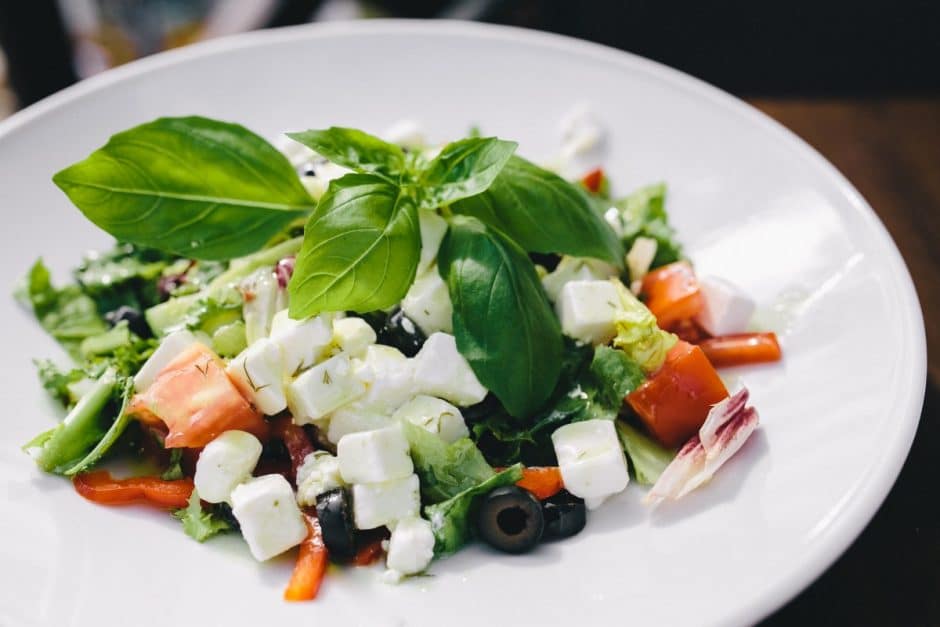Chances are you’ve attempted to eat healthier at some point in your lifetime, whether you were trying to lose weight, get your blood pressure or cholesterol down or simply feel more energized.
Processing all of the conflicting information out there can be daunting. Even more daunting can be making healthy choices when dining out. We spoke to Kim Knipe, Coordinator of Community Nutrition and Outreach at Chester County Hospital, who shared some great pointers to help keep you on track to a healthier lifestyle.
PA Eats: If you are trying to eat a healthier diet, what is the best way to approach dining out?
Kim Knipe: We tend to eat out a lot, whether it’s picking up a quick lunch at a sandwich place or sitting down at a restaurant for dinner. So is it truly a special occasion every time? We often treat every meal we eat out as if it were. Remember that the special occasion is that we don’t have to cook or clean up.
We can choose healthful foods rather than rich cream- and butter-filled concoctions and not feel deprived. And we really don’t need deep-fried appetizers and desserts every time we eat out.
To successfully maintain healthy habits when someone else prepares our meals, think about:
Where We Eat
Some eating establishments have more healthy options than others.
Almost every restaurant has at least a few healthful choices.
Check out nutrition facts online before you go.
How We Eat
Eat slowly enough to feel full (20 minutes).
Put down your fork and enjoy the company.
Sip water before and during your meal.
Breadbasket (or tortilla chip) strategy—ask the server to remove the basket.
How Much We Eat
Restaurant dishes are enough for two, three or even four servings.
Ask for a take home box WITH your meal.
Share the entrée (but get a separate salad!).
Once you feel full, don’t pick! Put your silverware on your plate, cover with your napkin and ask the server to clear your plate.
Do you have any tips for how to choose what to eat from a restaurant menu?
Look at those online menus and nutrition information ahead of time and identify items that are broiled, roasted, grilled and steamed. Avoid anything fried (even chicken and fish), breaded, alfredo, au gratin, buttery, “melty,” creamy, crispy or in gravy.
Ask for what you want prepared the way you want it, even if it’s not on the menu. It’s okay to be high maintenance—don’t be shy!
Don’t drink your calories. Choose water or unsweetened iced tea. Avoid soda and pre-sweetened drinks like lemonade. If you must have alcohol, choose simple drinks like wine or a mixed drink with sugar-free mixers. Stay away from fancy blender drinks that can carry as many calories as your entire meal. Always choose small drinks; if you’re still thirsty, switch to water.
When ordering, some great tips include:
Order first—don’t be influenced by your tablemates.
Select your entrée from the “light” section.
Ask for reduced fat dressing.
Ask for dressings and sauces served on the side.
Substitute a side salad, steamed vegetables or fresh fruit for mashed potatoes, fries or onion rings.
Substitute grilled chicken or shrimp for fried chicken or shrimp.
Select half portions when available.
Request whole wheat pasta or brown rice.
Ask for the chef to prepare your food with the least amount of fat/oil and salt possible.
A lot of people overeat, even when they aren’t hungry. What suggestions do you have for avoiding overindulgence?
Great question! Sometimes we eat when we are bored, upset, lonely, etc. Think about when this happens to you. Then think about what you can do instead of eating—call a friend, take a walk, write in a journal or color a cool adult coloring book. Keep a list of these activities handy so you can look at it any time you want to grab a snack.
When you do feel like eating, first check in with yourself to see if you really are physically hungry. If so, drink a big glass of water since our bodies sometimes trick us and send us a hunger signal even though we actually are thirsty. If you truly are hungry, reach for a small snack like a low-fat cheese stick, a piece of fruit, a handful of almonds or some air-popped popcorn. If you realize you just feel like chasing away boredom or another emotion, grab that list of things you like to do. Sometimes, just doing that check-in will help you realize you don’t really want or need food.
Also, keep some sugar-free gum, hard candies, flavored tea or seltzer around to keep your mouth busy when those feelings hit!
What help can Chester County Hospital provide to those who are seeking ways to improve their diet or lose weight?
Part of our mission as a community nonprofit hospital is to keep our neighbors healthy. We offer a weight management program called Weight Matters several times a year. This is currently an 8-week class, but look for a revamped, longer program in 2017.
We also have a free support group called Struggles and Solutions that meets on the second Monday of each month at 5 p.m. The group is geared toward anyone who is trying to make positive lifestyle changes.
Our outpatient dietitians can support people with one-on-one nutrition counseling for anyone wanting to lose weight, improve their health and/or manage heart disease, diabetes or other health issues.
This message brought to you by Chester County Hospital. Part of Penn Medicine, Chester County Hospital has been dedicated to the health and well-being of the people in Chester County and surrounding areas for nearly 125 years.
- Photo credits, top to bottom:: Kaboompics, Barn Images, Kaboompics, Negative Space, Kaboompics, PicJumbo










One Comment